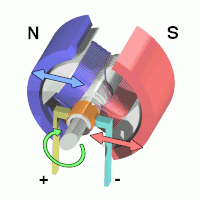
Photo from wikipedia
The paper attempts to demonstrate that the “old-school” approach in motor control studies suggested over a century ago by I. M. Sechenov (1866/1968, 1901) and, later, N. A. Bernstein (1923,… Click to show full abstract
The paper attempts to demonstrate that the “old-school” approach in motor control studies suggested over a century ago by I. M. Sechenov (1866/1968, 1901) and, later, N. A. Bernstein (1923, 1929, 1940, 1961) remains valid and relevant. Their methodology was to study the motor “periphery” in order to determine “central” mechanisms of motor control. The approach, which can be termed “bottom-up,” is contrasted with the “top-down” methodology of first making models of brain control and then investigating the functioning of muscles and joint torques. The earlier progress in motor control studies was, to a great extent, due to the fact that Bernstein developed procedures to register multiple degrees of freedom and thus to analyze in detail the structure of natural movement. The analysis of multi-joint goal-directed movement per se, in its own right, could be the starting point for productive studies of both muscular system functioning and its central control by the nervous system. The article reports on how, in some of his less well known works, Bernstein analyzed complex multi-joint movements. The article’s main focus is on movements of the arm as a model example of multi-joint goal-directed movements. It reviews a body of research that follows the “bottom-up” tradition by summarizing contemporary research on two contrasting cases: (1) of a highly coordinated motor skill, as achieved in musical performance or in a precise stroke; and (2) of pathological arm movement in post-stroke neurological patients who have lost capacity as a result of damage to the central nervous system. The paper demonstrates the need for inclusive analyses of all existing degrees of freedom of the moving arm. In the first case, this is important in order to identify some features of learning skills. In the second case, it is important in order to adequately assess the restoration of movements in the process of rehabilitation. The paper concludes by arguing that the “bottom-up” approach in studying the nervous control of complex movements possess a heuristic potential that has not been exhausted.
Journal Title: Frontiers in Neuroscience
Year Published: 2020
Link to full text (if available)
Share on Social Media: Sign Up to like & get
recommendations!